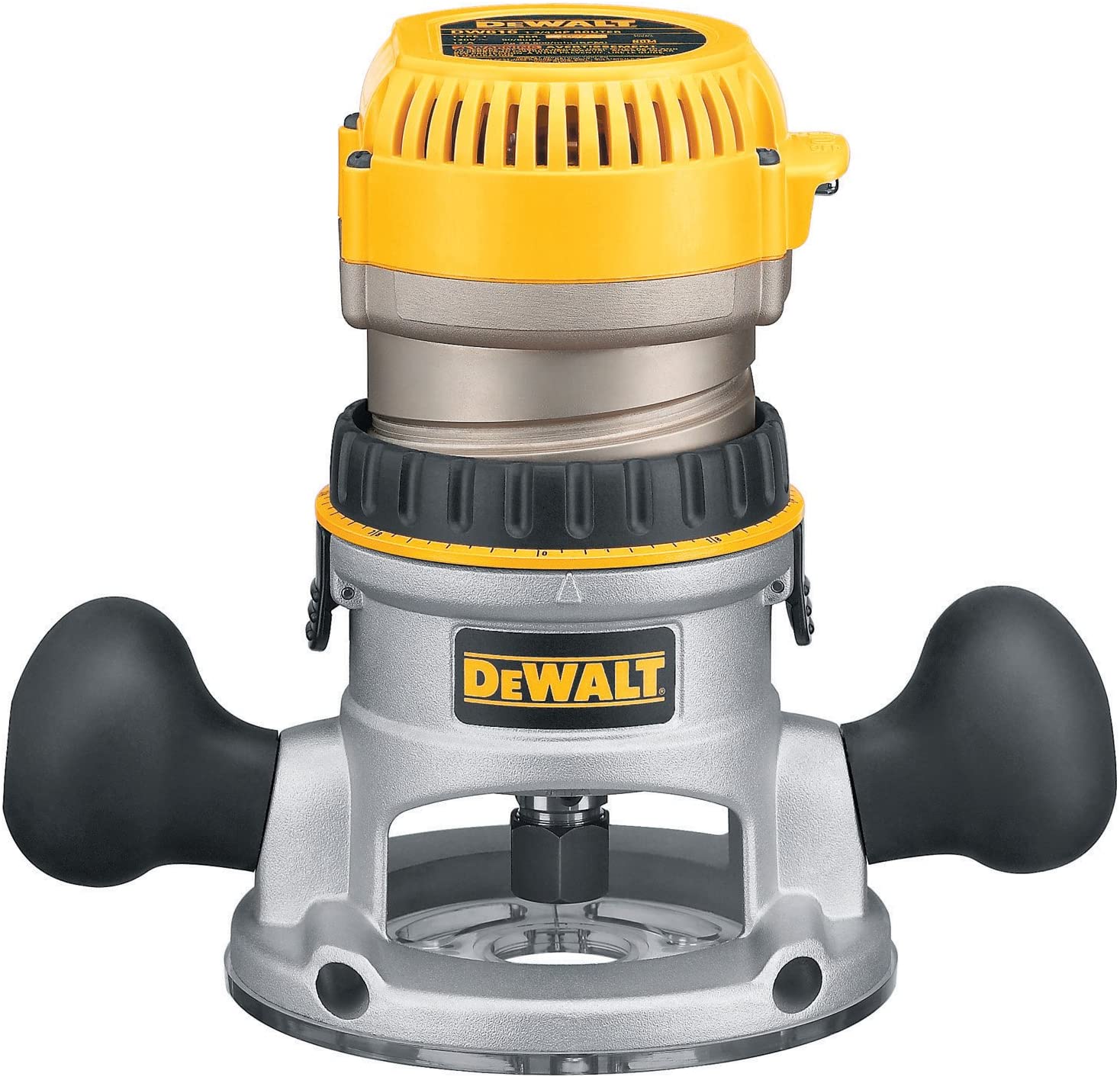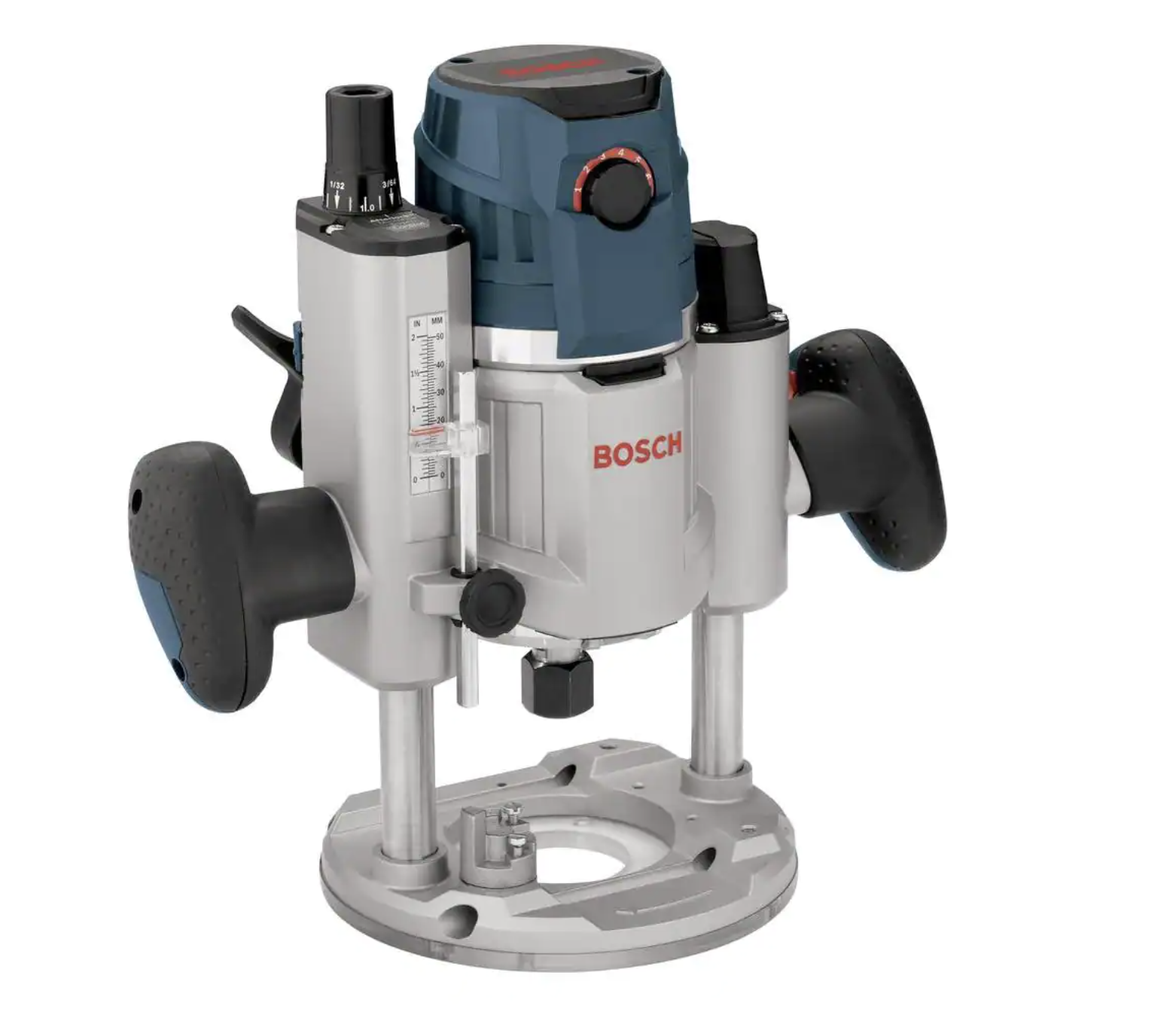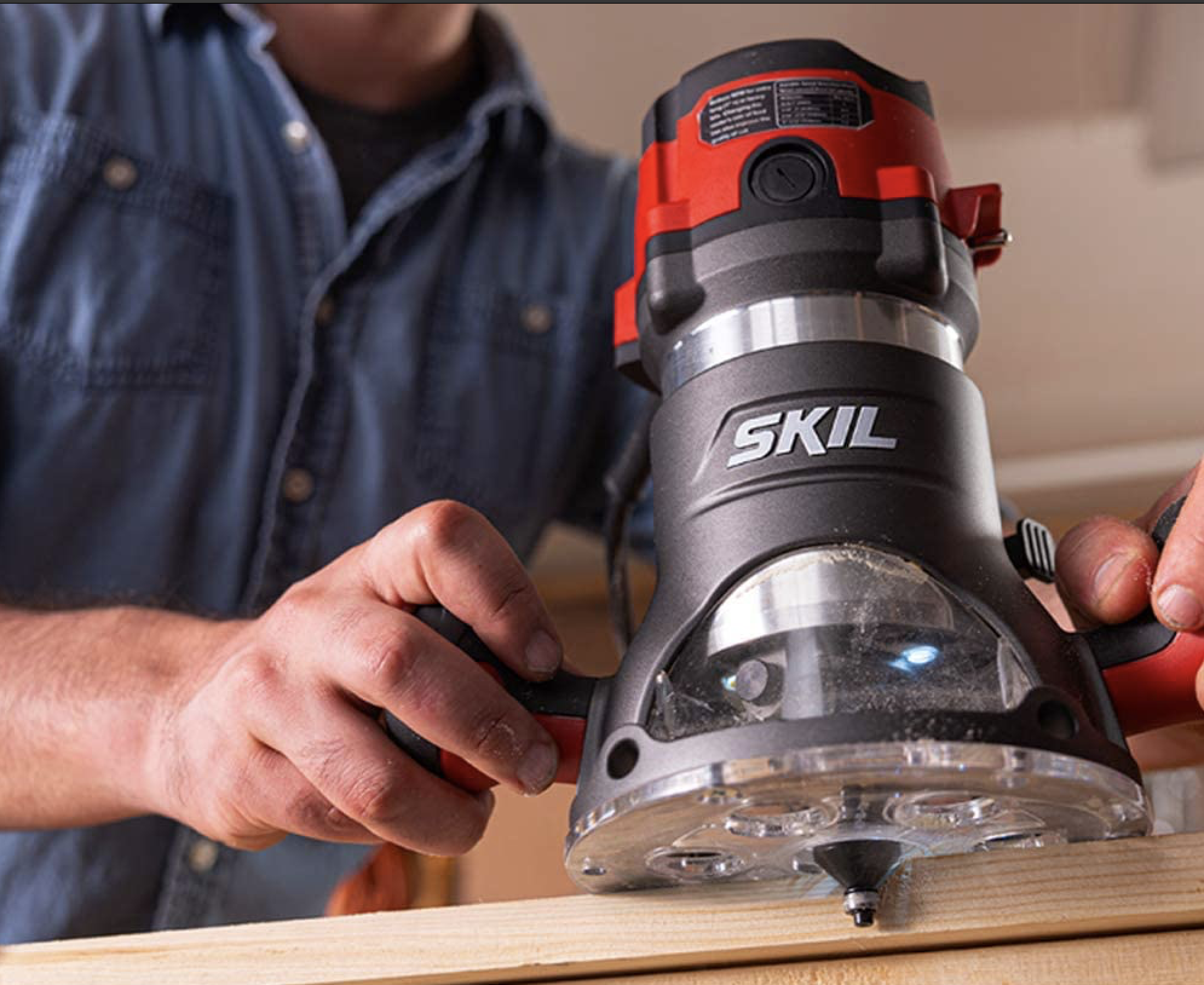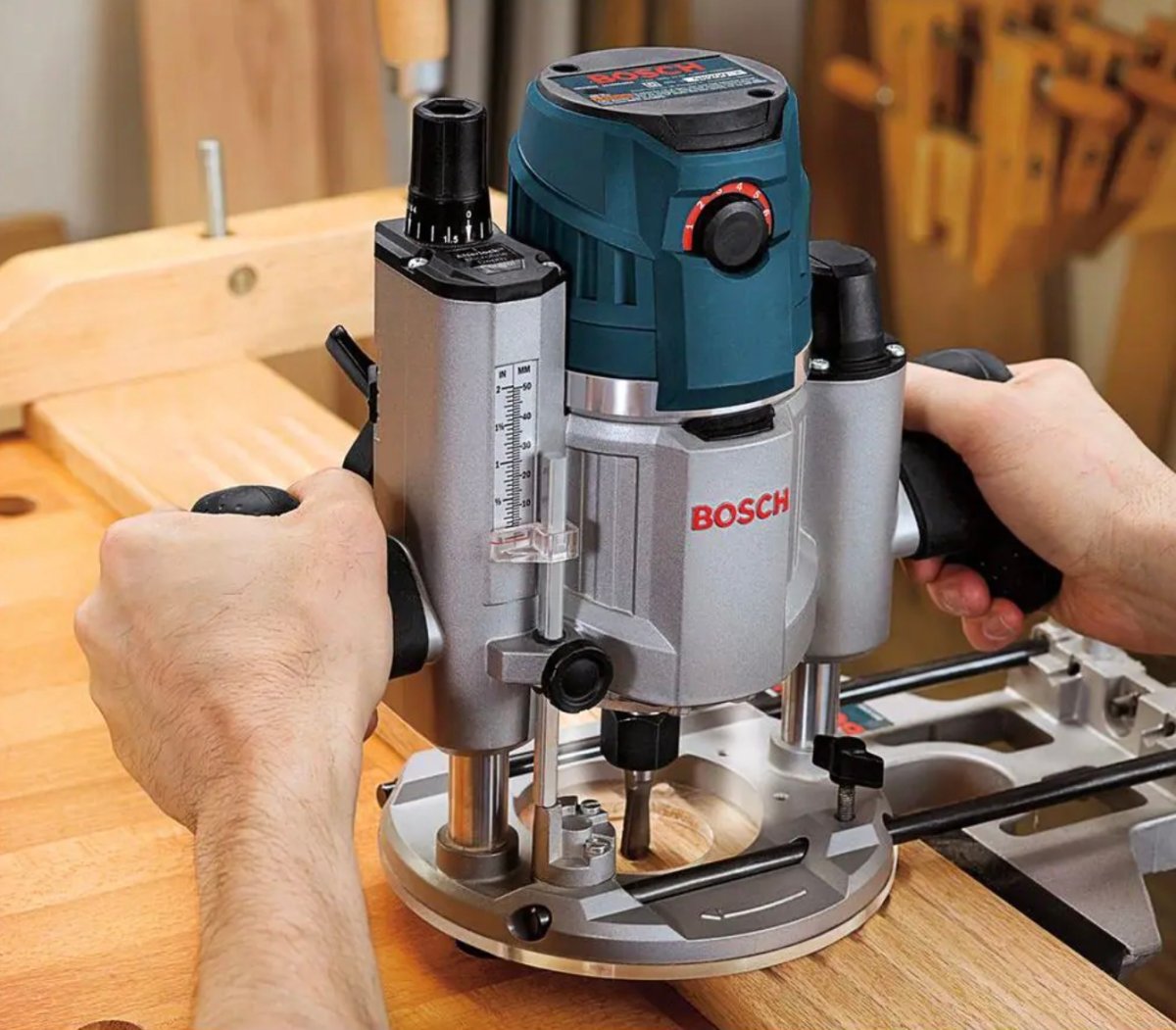We may earn revenue from the products available on this page and participate in affiliate programs. Learn More ›
DIYers and woodworkers (usually) love their tools. But, when two tools—like a plunge router and fixed-base router—appear to serve the same purpose, it can be a struggle to choose the right one for the job. After all, both types of routers mill wood to a shape or a profile, use the same bits, and often share the same features. So, what’s the difference between plunge routers versus fixed-based routers?
If you’re unsure yourself, this article can help clear up the confusion. We’ll answer many of the questions about these wood routers, including how each one works and what their main differences are. Keep reading to learn more.
RELATED: Cut to the Chase: A Tested Review of 2025’s Best Router Tables
A fixed-base router locks the bit at a specified depth.

A fixed-base router is a woodworking tool with a high-speed motor that allows the user to mill shapes or profiles on wood materials. They can also trim laminate to size or route dados and mortises for timber framing or cabinetmaking, and they’re a far cry from old school hand routers.
However, the term “fixed-base” is a bit of a misnomer. These tools have adjustable bases that can be locked into a specific height or position. There are even small dials that allow for micro-adjustments. Once that height is locked in place, though, the tool does not compress or extend, meaning the bit can be set to the exact depth needed for the task at hand.
Our Recommendation: Get the DEWALT 1-3/4 HP Fixed Base Router on Amazon for $127.73
This DeWalt fixed-base router features a 1¾-horsepower, 11-amp motor with an easily-adjusted base, complete with micro-adjustments for improved accuracy.
A plunge router features spring-loaded arms that lower the bit to a specified depth.

Plunge routers work similarly to fixed-base routers in that they have high-speed motors, use the same bits, and mill wood to shape and size. They’re also capable of milling dados and mortises (sometimes with even greater precision), and can route profiles on the edges of boards.
However, there’s a distinct difference between plunge routers and fixed-base models. Rather than a set base, a plunge router has spring-loaded arms that lift the motor and bit up off the workpiece. To route the wood, the router must be pushed down into the material. When finished with a cut, the user can release the pressure and the router will lift back up, bringing the bit with it.
Our Recommendation: Bosch 2.3 HP Electronic Plunge-Base Router on The Home Depot for $231.28
Bosch’s plunge router features soft-start tech for control, a high maximum speed, and a heavy-duty 15-amp motor for working through tough woods.
RELATED: The Best Router Bits for Your Woodworking Projects, Tested
Fixed-base routers are often lighter and more compact than plunge routers.
Fixed-base routers have fewer moving parts. Rather than springs and stainless steel arms to hold the motor, these models have lightweight removable bases that snap onto the router itself. Often, these bases contain plastic and lightweight metals to keep the overall weight light. This can give fixed-base routers a top-heavy feel, but they’re still considerably lighter than plunge routers.
Also, without the need to house springs or telescoping arms, fixed-base routers are much more compact and streamlined. This makes for easier one-hand use—some models are even known as palm routers for this reason. Their smaller size also makes them easier to store when not in use.
Fixed-base routers are considered more accurate while plunge routers are more versatile.
Fixed-base routers have detents (built-in catches for gross adjustments), micro-adjustment dials, and clamps. Plunge routers have fewer adjustments, and they’re more difficult to use accurately since the router wants to push itself away from the work surface. This makes fixed-base routers more accurate.
However, once you learn how to use a plunge router, you’ll be capable of doing everything a fixed-base router can do. Plunge routers are also easier and safer to use in the middle of a workpiece without it jumping out of the user’s hands when the bit touches the surface. This means plunge routers are safer for some jobs than fixed-base routers.
Plunge routers are best for projects that require working from above, whereas fixed-base models are ideal for edgework.

When a project requires routing the middle of a workpiece, such as when milling mortises or hidden dados (dados that don’t run all the way from edge to the other), plunge routers are the way to go. You can position a plunge router where it needs to be, activate the motor, and lower the bit into the workpiece. It’s easier to control than a fixed-base router.
However, when it comes to accuracy on the edge of a board, such as when milling ogee profiles or rounding over tabletops, the accuracy of a fixed-base router is almost a necessity. These finished edges will be visible after the project is completed, meaning any changes in depth will be noticeable, so a dialed fixed-base router is best.
RELATED: How to Use a Router the Right Way
Plunge routers tend to be more expensive than comparable fixed-base routers.
Both types of routers are available at various price points with different features, like electronic feedback for motor speed control or slow-start for safer handling. However, when each router type is otherwise equal in terms of features, plunge router models are typically more expensive than fixed-base routers.
The reason for this is easy to understand. A plunge router has multiple moving parts that need to be durable and long-lasting. This means its construction uses more expensive materials than a fixed-base router. The springs and stainless steel arms in plunge routers need to compress and extend every time they’re used, whereas a fixed-base router’s base needs to adjust a handful of times during a project.
Final Thoughts
Choosing the best wood router for a project depends on several factors. However, most DIYers can get by with one tool or the other. For the average DIYer looking for maximum versatility, a plunge router is the better choice. Those looking for accuracy (or savings), a fixed-base router is the way to go.
The prices listed here are accurate as of publication on May 31, 2022.


